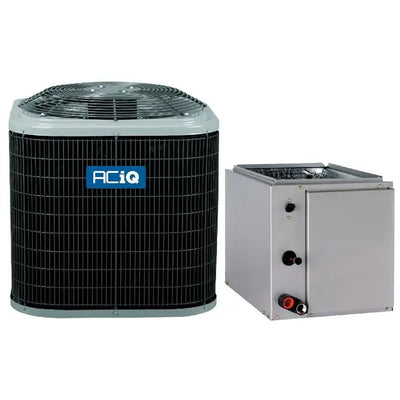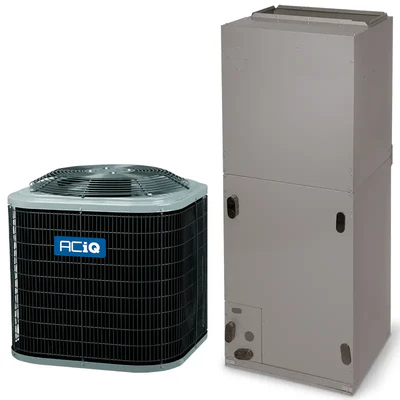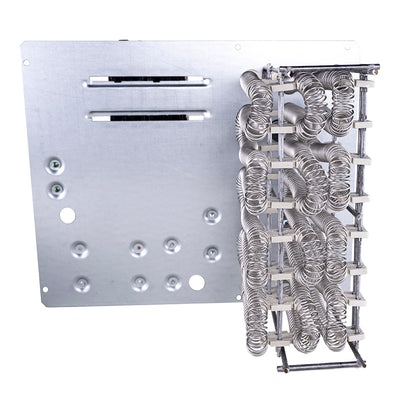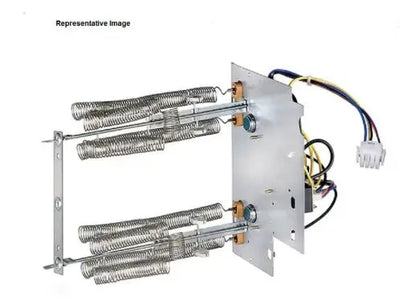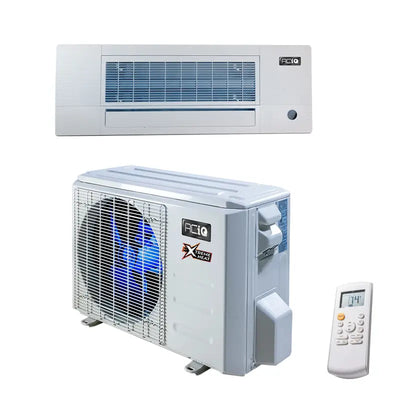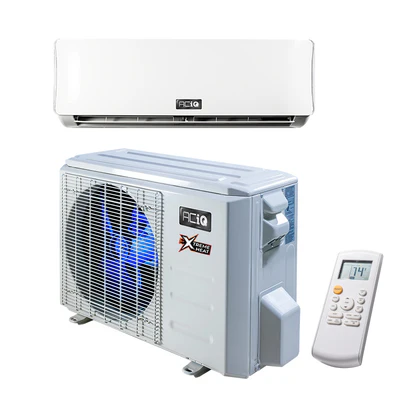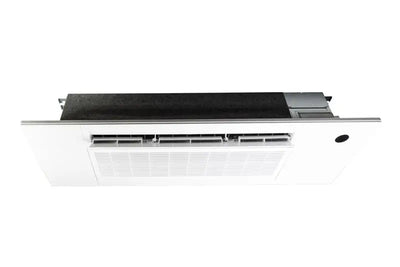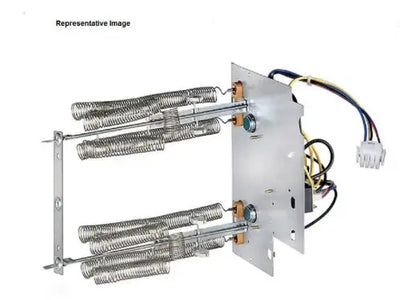Beginner’s Guide to Choosing the Right Size BTU HVAC System
If you’re new to HVAC (Heating, Ventilation, and Air Conditioning) systems, selecting the right size BTU (British Thermal Unit) system can seem daunting. This guide will break down the process into simple steps.
1. What is BTU?
- Definition: BTU measures the amount of energy needed to heat or cool a space. More BTUs mean more heating or cooling power.
2. Why Size Matters
- An undersized system will struggle to heat or cool your home, leading to discomfort.
- An oversized system will cycle on and off too frequently, wasting energy and causing wear and tear.
3. Measure Your Space
-
Find Your Square Footage:
- Measure the length and width of each room.
- Multiply the length by the width for each room, then add them up for the total square footage.
-
Example:
- Living Room: 15 ft x 20 ft = 300 sq. ft.
- Bedroom: 10 ft x 12 ft = 120 sq. ft.
- Total = 300 + 120 = 420 sq. ft.
4. General BTU Guidelines
- A rough estimate is 20 BTUs per square foot.
- Example: For 420 sq. ft.: 420 sq. ft. × 20 BTUs/sq. ft. = 8,400 BTUs
5. Adjusting BTU Calculations Based on Specific Factors
When determining the right BTU size for your HVAC system, it's important to consider various factors that can affect your heating and cooling needs. Here’s a more detailed breakdown:
- Ceiling Height
- Standard Ceiling (8 feet): The basic BTU calculation (20 BTUs per square foot) works well.
-
Higher Ceilings: For ceilings taller than 8 feet, you’ll need to increase the BTU calculation. A common rule of thumb is to add about 10% for each additional foot of height.
-
Example: If you have a 10-foot ceiling in a 400 sq. ft. room:
- Base BTUs:
- Increase for height:
- Total BTUs Needed:
-
Example: If you have a 10-foot ceiling in a 400 sq. ft. room:
- Insulation Quality
- Well-Insulated Homes: If your home has good insulation, you can stick with the basic BTU calculation.
- Average Insulation: If your home has average insulation, consider adding 10% to your BTU needs.
-
Poor Insulation: For homes with poor insulation, you may need to add 20% or more. Check for drafts, gaps, or insufficient insulation in walls and attics.
-
Example: If your calculated BTUs are 10,000 and you have poor insulation:
- Increase by 20%:
- Total BTUs Needed:
-
Example: If your calculated BTUs are 10,000 and you have poor insulation:
- Windows
- Standard Windows: If you have standard double-pane windows, the basic BTU estimate should suffice.
-
Large or Single-Pane Windows: If you have large windows or single-pane windows (which are less efficient), add extra BTUs:
- For each large window, add 500-1,000 BTUs.
- For single-pane windows, consider adding 10-20% to your BTU needs.
-
Example: If your home requires 10,000 BTUs and you have two large windows:
- Add 1,000 BTUs per window:
- Total BTUs Needed:
- Climate Zone
- Hot Climates: If you live in a region with extreme heat, consider increasing your BTUs by 10-20%.
- Cold Climates: In very cold areas, you might also need to add 10-20% for heating.
-
Mild Climates: For areas with mild weather, the basic calculation should suffice.
-
Example: If your calculated BTUs are 10,000 and you live in a hot climate:
- Increase by 15%:
- Total BTUs Needed:
-
Example: If your calculated BTUs are 10,000 and you live in a hot climate:
- Occupancy
- General Rule: Each additional person beyond the first two generates about 600 BTUs of heat.
-
Frequent Guests or Large Families: If you regularly have guests or a large family, factor in the additional heat.
-
Example: If your home is sized for 10,000 BTUs and you expect 4 additional occupants:
- Add BTUs.
- Total BTUs Needed:
-
Example: If your home is sized for 10,000 BTUs and you expect 4 additional occupants:
6. Consult Professionals
- It’s a good idea to consult an HVAC professional for an accurate assessment. They can perform a detailed analysis (often called a Manual J calculation) to determine the exact BTUs needed based on your home’s specifics.
We've also left a chart below to help you determine the right size BTU for your home or business using the above guide.
| Square Footage | BTU Capacity |
|---|---|
| How many BTUs for 100 square feet? | 2,000 BTU |
| How many BTUs for 200 square feet? | 4,000 BTU |
| How many BTUs for 300 square feet? | 6,000 BTU |
| How many BTUs for 400 square feet? | 8,000 BTU |
| How many BTUs for 500 square feet? | 10,000 BTU |
| How many BTUs for 600 square feet? | 12,000 BTU |
| How many BTUs for 700 square feet? | 14,000 BTU |
| How many BTUs for 800 square feet? | 16,000 BTU |
| How many BTUs for 900 square feet? | 18,000 BTU |
| How many BTUs for 1000 square feet? | 20,000 BTU |
| How many BTUs for 1100 square feet? | 22,000 BTU |
| How many BTUs for 1200 square feet? | 24,000 BTU |
| How many BTUs for 1300 square feet? | 26,000 BTU |
| How many BTUs for 1400 square feet? | 28,000 BTU |
| How many BTUs for 1500 square feet? | 30,000 BTU |
| How many BTUs for 1600 square feet? | 32,000 BTU |
| How many BTUs for 1700 square feet? | 34,000 BTU |
| How many BTUs for 1800 square feet? | 36,000 BTU |
| How many BTUs for 1900 square feet? | 38,000 BTU |
| How many BTUs for 2000 square feet? | 40,000 BTU |
| How many BTUs for 2500 square feet? | 50,000 BTU |
| How many BTUs for 3000 square feet? | 60,000 BTU |

















![Off-Grid EG4 System Bundle - 12kW 120/240V Output / 48VDC - 30.72kWh EG4 Lithium Battery Bank | 2 x EG4 6000XP | 6x EG4 Server Rack Batteries [BNDL-E0008]](http://minisplitsystemsdirect.com/cdn/shop/files/bndl-e0008__50911_600x.jpg?v=1724202023)
![Complete Hybrid Solar Kit - EG4 PowerPro ESS | 12 kW AC Output | Up To 45 kWh Battery Backup [Kit-E0007]](http://minisplitsystemsdirect.com/cdn/shop/files/490_source_1719931806_600x.webp?v=1726195104)
















